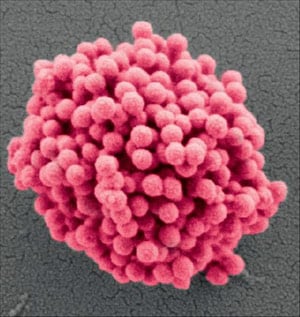
Electron microscope image of raspberry particle Credit: Chem. Mater., 2013, 25 (17), pp 3472–3479; DOI: 10.1021/cm4016386
Scientists from the University of Sidney have developed a new nanostructured material that uses raspberry particles to fabricate surfaces with low wettability and high water adhesion, resembling the properties of naturally occurring surfaces such as the rose petal.
A new nanostructured material with applications that could include reducing condensation in airplane cabins and enabling certain medical tests without the need for high tech laboratories has been developed by researchers at the University of Sydney.
“The newly discovered material uses raspberry particles – so-called because of their appearance – which can trap tiny water droplets and prevent them from rolling off surfaces, even when that surface is turned upside down,” said Dr. Andrew Telford from the University’s School of Chemistry and lead author of the research recently published in the journal, Chemistry of Materials.
The ability to immobilize very small droplets on a surface is, according to Dr Telford, a significant achievement with innumerable potential applications.
Raspberry particles mimic the surface structure of some rose petals.
“Water droplets bead up in a spherical shape on top of rose petals,” Dr Telford said. “This is a sign the flower is highly water repellent.”
The reasons for this are complex and largely due to the special structure of the rose petal’s surface. The research team replicated the rose petal by assembling raspberry particles in the lab using spherical micro- and nanoparticles.
The result is that water droplets bead up when placed on films of the raspberry particles and they’re not able to drip down from it, even when turned upside down.
“Raspberry particle films can be described as sticky tape for water droplets,” Dr Telford said.
This could be useful in preventing condensation issues in airplane cabins. It could also help rapidly process simple medical tests on free-standing droplets, with the potential for very high turnover of tests with inexpensive equipment and in remote areas.
Other exciting applications are under study: if we use this nanotechnology to control how a surface is structured we can influence how it will interact with water.
“This means we will be able to design a surface that does whatever you need it to do.
“We could also design a surface that stays dry forever, never needs cleaning, or able to repel bacteria or even prevent mold and fungi growth.
“We could then tweak the same structure by changing its composition so it forces water to spread very quickly.
“This could be used on quick-dry walls and roofs which would also help to cool down houses.
“This can only be achieved with a very clear understanding of the science behind the chemical properties and construction of the surface,” he said.
The discovery is also potentially viable commercially.
“Our team’s discovery is the first that allows for the preparation of raspberry particles on an industrial scale and we are now in a position where we can prepare large quantities of these particles without the need to build special plants or equipment,” Dr Telford said.
The other research team members and journal authors are Associate Professor Brian Hawkett and Dr. Chiara Neto, both from the School of Chemistry, and Dr Chris Such from Dulux Australia, who supported the research through an Australian Research Council Linkage Project grant.
Reference: “Mimicking the Wettability of the Rose Petal using Self-assembly of Waterborne Polymer Particles” by A. M. Telford, B. S. Hawkett, C. Such and C. Neto, 26 August 2013, .
DOI: 10.1021/cm4016386

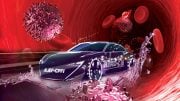

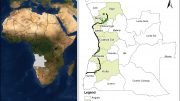
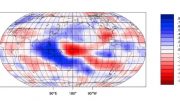
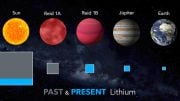
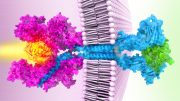

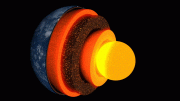
Be the first to comment on "New Nanostructured Material Mimics the Wettability of a Rose Petal"